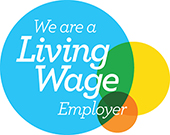Limited reopening of churches: first phase can begin within Diocese of Truro
Revised guidance that will allow nominated members of the clergy or lay ministers to go into churches has been issued within the Diocese of Truro.
All churches have been closed for public worship and for private prayer since March 24.
But following a virtual meeting of the House of Bishops this week, and the decision to set in motion a phased approach to the reopening of churches, the Rt Revd Philip Mounstephen, Bishop of Truro, has written to clergy and lay parish leaders in the diocese setting out the new guidance.
Now, one person – generally the parish priest or an authorised lay worship leader – will be allowed to access the church. This is for any or all of several purposes:
- to pray the Daily Office and/or celebrate the Eucharist on behalf of the community they serve;
- to stream or record worship;
- to ring one bell to mark prayers being said or to mark events (eg VE Day, or the Thursday evening clap for key workers); and
- To check the fabric of the building.
Before they return to a church that has been closed for some time, the individual would need to be sure it is safe to do so, and the national church has issued some practical guidance to help them do this. They may be accompanied by one member of their household, with whom they live, in order to help them manly with filming/streaming.
Limited scope, but right direction
In his letter to parish leaders, Bishop Philip wrote: “Clearly this change is limited in scope – but it is a move in the right direction.
“I would like to stress that there is absolutely no obligation for you to do this. You may feel that for the time being streaming or recording worship in your own homes would indicate a show of solidarity with your parishioners. That’s what I intend to continue to do and will not be recording from the chapel here at Lis Escop.
“There is still a very long way to go in our fight against this virus, and we should not underestimate the size of the challenge ahead. However, we should also acknowledge and celebrate the green shoots of recovery when we see them. Above all let us press forward in resurrection hope.”
The phased approach agreed by the House of Bishops was:
- Phase one: an initial, immediate, phase allowing very limited access to church buildings for activities such as streaming of services or private prayer by clergy in their own parishes, so long as the necessary hygiene and social distancing precautions are taken;
- Phase two: access for some rites and ceremonies when allowed by law, observing appropriate physical distancing and hygiene precautions
- Phase three: Worship services with limited congregations meeting, when Government restrictions are eased to allow this.
Valuable lessons
Bishop Philip added: “I look forward very much to our being able to use our buildings again – and even more so to meeting face to face once again, when we are able. However, it is my strong hope that the valuable lessons about making church accessible and serving our communities in new and sacrificial ways learnt during this crisis should not be lost.
“We are not going back to how things were, but pressing on into the future in faith and in hope.”




